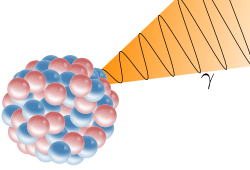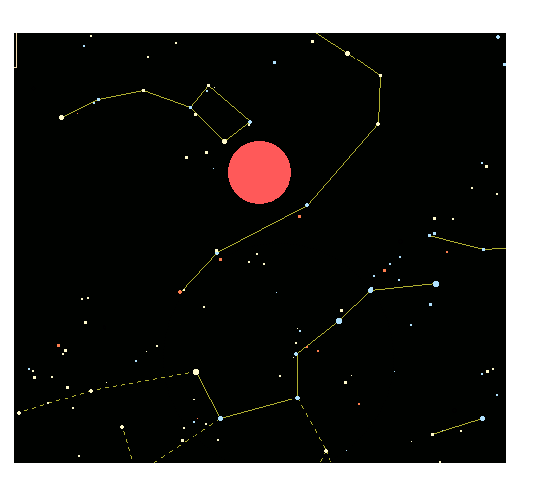Thursday, December 31, 2009
Beyond the Pale
Where there is uncertainty, man is quick to insert anything to plug the void. Remain sceptical at all times. Or should that be 'sssceptical'?.
Full article here :
http://politically-confused.blogspot.com
Wednesday, December 30, 2009
What Did The Ancients Think Of Spirals


Artist's impression of an emission of a gamma ray (γ) from an atomic nucleus

Artist's representation of M33 X-7: a binary system in the nearby galaxy M33, containing a massive blue star feeding material to a black hole surrounded by a small accretion disk.

An artist's concept of a close Algol-type binary. The relative size of the Sun is illustrated by the small circle to the upper right of the figure. Illustration courtesy of M. Richards.
Sunday, December 27, 2009
Astral Mystery @ St. John's Chancel Ceiling
Parishioners at one of Canada's oldest Anglican churches will be puzzled by an enduring enigma when they gaze heavenward this Christmas.Astral mystery endures in Nova Scotia churchThe mysterious chancel ceiling at St. John's Anglican Church in Lunenburg, N.S., was reconstructed in 2004 after a fire three years earlier. While locals now know what the star pattern represents, they don't know who originally designed it, or how. (CBC)
The chancel ceiling at St. John's Anglican Church in Lunenburg, N.S., has a special pattern of gilded stars on it, and while locals now know what it represents, they have yet to find out who originally designed it, or how.
The conundrum emerged after the church, built in 1754, burned on Halloween night in 2001 as a result of arson. The parish sought to reconstruct the building's interior as closely as possible, and it brought in parishioner Margaret Coolen in 2004 to re-create the ceiling over the altar.

But the church didn't have a complete set of photographs of the original star pattern, so Coolen, hoping the pattern reflected the actual alignment of heavenly bodies in the night sky, sought the help of astronomer David Turner of Saint Mary's University in Halifax.
That's when the first mystery emerged.
Turner recognized the constellation Perseus in the photos of the eastern part of the chancel ceiling. But Perseus, seen from Lunenburg, always lies in the northern part of the sky and never due east.
"We looked at them and didn't recognize any of the star groups," Coolen explained of the constellations' positions. "It looked like they might just simply be put up at random, but it didn't seem like someone would go to that trouble to put just random stars on the ceiling."
Coolen suggested that Turner instead look at the stars' alignment around 2,000 years ago — on Christmas Eve in the year of Jesus' birth.
Then, using software that plots the positions of heavenly bodies throughout history, Turner had a revelation: The chancel ceiling's pattern indeed reflected quite closely how the night sky would have looked from Lunenburg all those years past, when constellations appeared in somewhat different locations than today.
"I set the scene for sunset, and bingo! I found myself looking at Perseus in the eastern sky," he said.
But while the finding has excited parishioners at St. John's Anglican, who now know that they are gazing up at the heavens as they would have appeared on the eve of their Saviour's birth, it has also perplexed them.
The ornamentation they once merely called "Mariner's Sky" holds a stellar motif of immense astronomical significance. But who could possibly have calculated the astral positions, and how, remains a mystery. http://www.cbc.ca/canada/nova-scotia/story/2009/12/23/ns-lunenburg-church-ceiling-star-mystery.html?ref=rss
Thursday, December 10, 2009
Bedford Barrens Petroglyph
Date: n.d., pre-1500 A.D.
Place: In situ: Bedford, N.S.
This petroglyph, or rock carving, was cut with stone tools, probably pre-dating the introduction of European-made metal tools, beginning about 1500. Hence it includes the earliest surviving human or humanoid figure of or by a Mi'kmaq. The eight-pointed star occurs in Mi'kmaq hieroglyphic writing as a symbol for the sun. The knobbed crosses occur elsewhere as part of the hieroglyph for 'star'. http://museum.gov.ns.ca
Other Mi'kmaq petroglyphs: Kejimkujik National Park, N.S.
This is the earliest photographic record of Mi'kmaq rock art. Parks Canada has completed a catalogue of all known petroglyphs within the boundaries of Kejimkujik National Park.






"Perhaps some of the most important images portray men and women wearing the traditional clothing of the time. In some cases, these images show highly detailed double-curve designs decorating the clothing. Foremost among these images is the unique peaked hat traditionally worn by Mi’kmaw women. Over 60 petroglyphs depict these peaked hats, suggesting the importance of women in the matriarchal Mi’kmaw society. Since none of this clothing remains today, these images provide the only examples of the motifs used by the early Mi’kmaq, before they were influenced by the arrival of Europeans." http://www.muiniskw.org/pgHistory3b.htm



Molly Muise descendant of Philippe Mius
The Mi'kmaq chaperon is preserved today as part of the traditional regalia worn by women at Pow Wows. It is a Medieval European head-covering that invokes a time in history when all married women wore the hood in imitation of their queen, who was also a member of the grail family. http://www.thelibraryofhope.com/basketstories2.htm


This is not a realistic representation of the Milky Way, but a symbolic rendering of a road of supernatural power, a connection between worlds like the twisted frog's leg of the Hočąk Medicine Rite, the rotating, double helix pathway to the Otherworld. Note that the star embedded in the Milky Way has a single helix "power line" descending downward, just like Gottschall has the double helix descending downward from each of the solar-like discs. Two more examples of the "double helix" design are found from the Great Lakes region. The one above right is described as an "unidentified abstract symbol", and the more diamond shaped one on the right is from the Cliff Lake paintings. http://hotcakencyclopedia.com/ho.Gottschall.html
I recommend reading John Bear MacNeil's Basket Stories for Mi’kmaq Grail Alliance, Kelly's Mountain, Red Ochre Folk, Kluskap/Cronus Myth, The Medewewin Stone, Circle Cross, Et In Arcadia Ego, Pharoah Unas, Roi Perdu - the Lost King, The lost Ark of the Covenant, Norse-Mi’kmaq Alliance,The Dark Virgin, Circles of Mi’kma’ki, Membertou/Sagamo/ The knight Sagramore @ King Auther's round table, The Templar links & much more
Also see John Colman's work on NS ley lines & Mi'kmaq scripting language/ Egyptian Connection
















